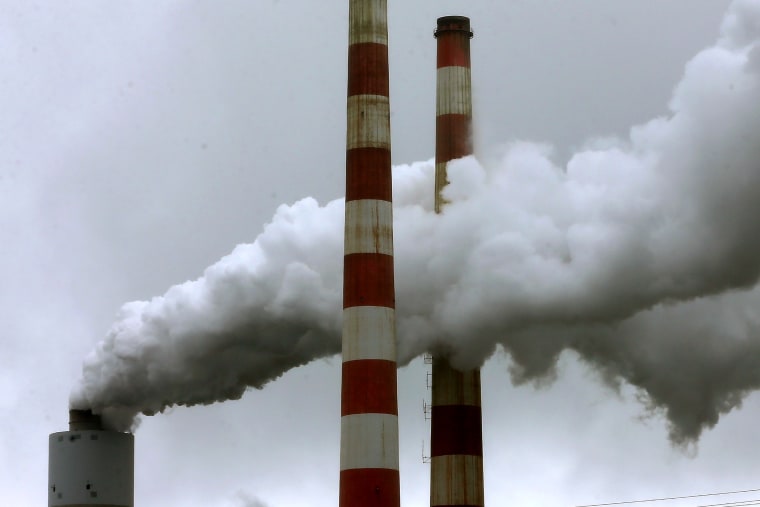The Supreme Court struck a blow against the Environmental Protection Agency's effort to reduce greenhouse gas emissions Monday, ruling 5-4 against an agency plan to require permits for sources of greenhouse gas emissions. The decision split the court along ideological lines, with the high court's conservative wing on one side, and its Democratic appointees dissenting from part of the ruling. The decision still leaves the EPA with other palatable options for reducing air pollution.
The second of two big environmental cases this term, Utility Air Regulatory Group v. EPA involved a collection of challenges from industry groups to the EPA's authority to regulate greenhouse gas emissions, which contribute to global warming. The EPA had sought to issue a requirement that companies seek a permit before building or expanding facilities, such as power plants, factories or refineries, which would emit large amounts of greenhouse gasses. At issue is whether or not permits for facilities already sources of other pollutants would also have to address greenhouse gasses, and whether emitting greenhouse gasses alone would trigger the requirement to seek a permit.
The high court ruled Monday that the EPA could not require permits based on greenhouse gas emissions alone, but that greenhouse gasses could be considered as part of the permit process for facilities already emitting other pollutants. The decision narrows the EPA's options for dealing with emissions that cause climate change, but the agency could still reduce such emissions through another provision of the Clean Air Act that allows the EPA to set emissions standards.
The impact on air pollution may also be limited. According to the EPA's calculations, its plan would have addressed 86% of greenhouse gas emissions. The Supreme Court's decision will still allow the agency to address 83% of those emissions. In a statement issued following the ruling, the EPA characterized the decision as "a win for our efforts to reduce carbon pollution because it allows EPA, states and other permitting authorities to continue to require carbon pollution limits in permits for the largest pollution sources."
The industry groups had wanted the high court to reconsider its 2007 ruling in Massachusetts v. EPA holding that the EPA had the authority to regulate such emissions under the Clean Air Act. The Supreme Court declined, instead agreeing to hear narrower questions surrounding the EPA's permit authority. That in itself was regarded as a win by environmentalists, since it meant that the agency's general authority to regulate carbon emissions was not in question. The EPA won a far more sweeping case earlier this year when the high court upheld an EPA rule regulating interstate air pollution.
President Obama has promised to set new emissions standards for power plants which would cut emissions by 30% before 2030. The authority to set emissions standards under the Clean Air Act is distinct from the permitting authority, and was not at issue in the case.
